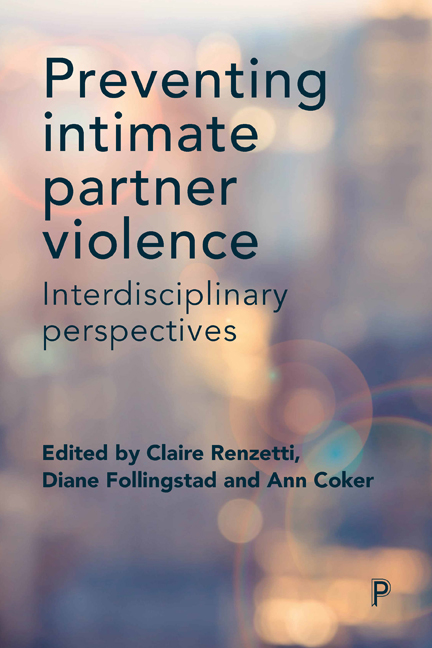Book contents
- Frontmatter
- Contents
- List of Abbreviations
- Notes on Contributors
- Preface
- One Preventing Intimate Partner Violence: An Introduction
- Two Intimate Partner Violence Prevention Among Underserved and Understudied Groups: The Roles of Culture and Context
- Three Primary Intimate Partner Violence Prevention Programs for Adolescents and Young Adults
- Four Engaging Men and Boys in Preventing Gender-based Violence
- Five Gender-based Violence Assessment in the Health Sector and Beyond
- Six Emergent Research and Practice Trends in Contextually Addressing the Complexity of Women’s Use of Force
- Seven Research on Restorative Justice in Cases of Intimate Partner Violence
- Eight Justice as a Tertiary Prevention Strategy
- Nine Innovative Programs to Economically Empower Women and Prevent Intimate Partner Violence Revictimization
- Ten Preventing Intimate Partner Violence: Thinking Forward
- Index
Seven - Research on Restorative Justice in Cases of Intimate Partner Violence
Published online by Cambridge University Press: 05 April 2022
- Frontmatter
- Contents
- List of Abbreviations
- Notes on Contributors
- Preface
- One Preventing Intimate Partner Violence: An Introduction
- Two Intimate Partner Violence Prevention Among Underserved and Understudied Groups: The Roles of Culture and Context
- Three Primary Intimate Partner Violence Prevention Programs for Adolescents and Young Adults
- Four Engaging Men and Boys in Preventing Gender-based Violence
- Five Gender-based Violence Assessment in the Health Sector and Beyond
- Six Emergent Research and Practice Trends in Contextually Addressing the Complexity of Women’s Use of Force
- Seven Research on Restorative Justice in Cases of Intimate Partner Violence
- Eight Justice as a Tertiary Prevention Strategy
- Nine Innovative Programs to Economically Empower Women and Prevent Intimate Partner Violence Revictimization
- Ten Preventing Intimate Partner Violence: Thinking Forward
- Index
Summary
Introduction
This chapter will review the evaluation research on restorative justice (RJ) in cases of intimate partner violence (IPV). What do we know about how well RJ ensures the safety and immediate needs of survivors? What do we know about whether survivors feel a sense of justice as a result of these practices? What do we know about the ability of these practices to hold offenders accountable, and to prevent further offending?
The discussion begins with a brief description of the three most common forms of RJ, and a brief look at some of the evaluation research conducted on these practices. Next, the research literature on RJ and IPV will be reviewed. Following this review, attention will be paid to some recent developments in RJ and other alternative approaches to crimes of sexual assault and severe violence. The research literature on RJ and IPV is remarkably small, and as a result the potential of RJ might best be seen by also considering its application to other serious forms of victimization.
Common forms of RJ
There are three forms of RJ that are commonly used in cases of IPV—namely, victim–offender mediation (VOM), family group conferencing, and peacemaking and sentencing circles—all of which share a set of goals. They seek to hold offenders accountable; empower those who are victimized; allow for the expression of feelings; clarify facts about the crime; provide an opportunity to address the impact of the crime on the survivors and those around them; and come to an agreement about how the offender can make amends.
Victim–offender mediation (VOM)
VOM involves a direct, mediated interaction between victims and offenders. This is sometimes called victim–offender dialog (VOD), or (as will be discussed later) victim–offender conferencing (VOC). The power of this process lies in the emotional exchange between the parties. Extensive preparation of both victims and offenders is essential to effective practice. The mediator must explain the process and the potential outcomes to both parties. Mediators also need to assess whether the victims and offenders are ready for such an encounter. Arising in Canada and the US in the early 1970s, VOM is now a global phenomenon; there are now over 1,200 programs worldwide (Victim Offender Mediation Association, 2014).
- Type
- Chapter
- Information
- Preventing Intimate Partner ViolenceInterdisciplinary Perspectives, pp. 159 - 184Publisher: Bristol University PressPrint publication year: 2017
- 1
- Cited by



